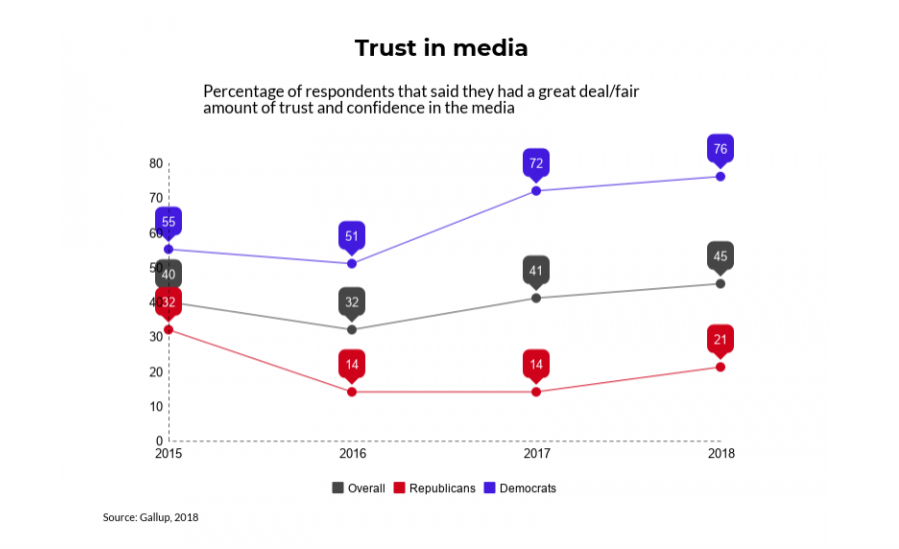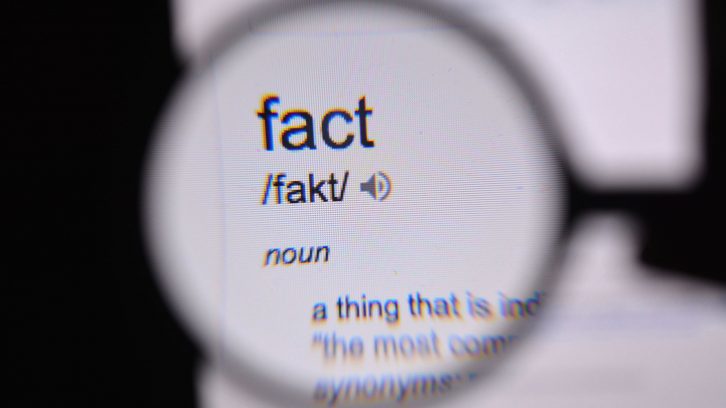Angie Holan is sitting at her desk, lost in the chatter of the newsroom around her. Phones ringing, keyboards clicking, pens stroking across pieces of paper. It is March 25, 2008, and her thoughts are interrupted by the sound of her telephone ringing, the light on the base glowing with every pulsating sound.
A source is returning her call to confirm the answer to a question she had asked earlier that day. After a few minutes the call is over, and she began to write this headline: “Video shows tarmac welcome: no snipers”. And just like that Hillary Clinton’s pants are on fire.
Holan has worked for Politifact since the beginning. She started in 2007 as a fact-checking reporter and after thousands of checks was made editor at the end of 2013.
In her time with Politifact, Holan has seen the organization grow from four reporters in a corner of the Tampa Bay Times newsroom, to 11 reporters spread across the U.S.
The first organization of its kind, Politifact’s “main mission is to give people the information they need to govern themselves in a democracy,” Holan says.
In 2016 the number of fact-checking enterprises increased by more than 50 per cent, bringing the number to more than 161 fact-checking sites worldwide. Today in the U.S. there are 50 fact-checking sites, more than ten times the number in any other country.
Due to the rise of social media, journalists are no longer in a position where they can drive the conversation around news. Though more news can be shared faster than ever before, there is also a rise in the number of inaccuracies shared. To combat this, fact-checkers are trying to work faster and smarter in the era of online news.
Fact-checking foundations
One of the earliest cases of fact-checking was done by the Bureau of Accuracy and Fair Play, in 1913. Founded in New York by Ralph Pulitzer and Isaac White, the bureau focused on identifying mistakes in print reporting while looking to expose “deliberate fakes.”
At the time, blame was usually placed on writers, meaning if inaccuracies were pointed out, the writer would take the fall rather than the publication.
Articles were rarely checked for inaccuracies prior to publication. This remained standard for many publications until 1923 when TIME magazine introduced a research department to check for inaccuracies in articles before they were published.
In the beginning, the department consisted solely of one woman named Nancy Ford, but by 1938 grew to 22 women researching and fact-checking. The practice of fact-checking quickly became widespread and departments were developed, similar to the one at TIME, at publications including the New Yorker in 1927 and Newsweek in 1933.
For decades fact-checking departments were introduced in newsrooms across North America. Their goal was twofold: to hold people in power accountable, and to ensure truthful, unbiased reporting.
In the 21st century things began to change, with the arrival of the Internet.
Opinion vs. Fact
Fact-checkers, especially in the U.S., are leading the way in determining what is fact and what is an opinion. The struggle, however, is convincing partisan-driven audiences of the difference.
Jane Elizabeth, former Director of Accountability Journalism at the American Press Institute (API) in Arlington, Va. has worked extensively on the issue of partisan biases and fact-checking.
According to Elizabeth, the 2016 elections highlighted the struggle journalists face to present a fact, and not have it be discredited due to political opinion.

“What matters to them is what their political party believes. They’re going to believe them over the facts because that’s the world they live in,” Elizabeth said.
Continue reading this story on the Signal, where it was originally published.
Kristen is a journalism student currently in the final year of her degree. She dreams of taking photographs of wildlife in extreme climates and telling the stories of people in the most remote parts of the planet. In her journey through life, she seeks to answer the question: why?

